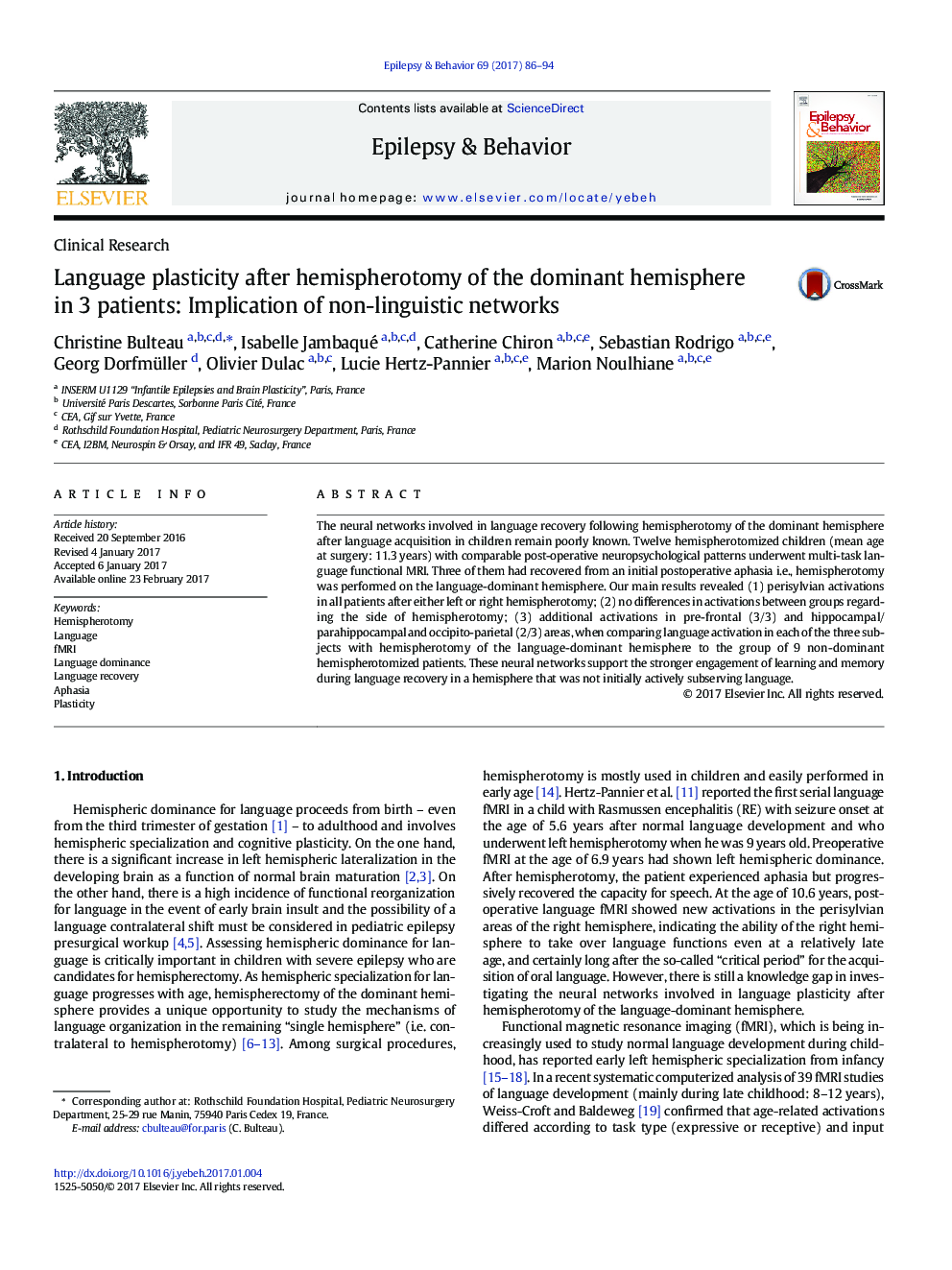| Article ID | Journal | Published Year | Pages | File Type |
|---|---|---|---|---|
| 5628405 | Epilepsy & Behavior | 2017 | 9 Pages |
â¢Multitask language imaging after hemispherotomy is feasible in childhood.â¢Perisylvian activations were found in each patient whatever the side of hemispherotomy.â¢After aphasia, the non-dominant hemisphere is able to sustain functional recovery.â¢Language recovery involves additional areas in the non-dominant hemisphere.â¢A stronger engagement of the learning and memory network sustains language recovery.
The neural networks involved in language recovery following hemispherotomy of the dominant hemisphere after language acquisition in children remain poorly known. Twelve hemispherotomized children (mean age at surgery: 11.3Â years) with comparable post-operative neuropsychological patterns underwent multi-task language functional MRI. Three of them had recovered from an initial postoperative aphasia i.e., hemispherotomy was performed on the language-dominant hemisphere. Our main results revealed (1) perisylvian activations in all patients after either left or right hemispherotomy; (2) no differences in activations between groups regarding the side of hemispherotomy; (3) additional activations in pre-frontal (3/3) and hippocampal/parahippocampal and occipito-parietal (2/3) areas, when comparing language activation in each of the three subjects with hemispherotomy of the language-dominant hemisphere to the group of 9 non-dominant hemispherotomized patients. These neural networks support the stronger engagement of learning and memory during language recovery in a hemisphere that was not initially actively subserving language.
